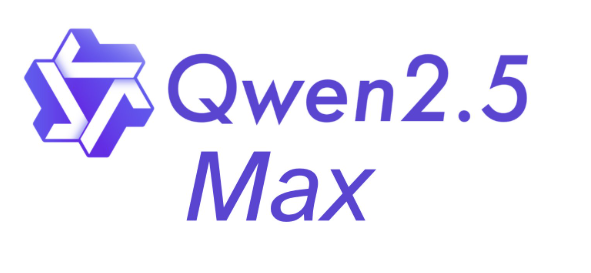When it comes to evaluating cutting-edge AI models like Grok 3, benchmark testing isn't just a box-ticking exercise—it's the ultimate proving ground. Whether you're a developer aiming to fine-tune your system or a tech enthusiast curious about AI capabilities, understanding Grok 3 benchmark testing methodology is key. In this guide, we break down core principles, practical steps, and must-know tools to ensure your evaluations are both rigorous and insightful. Let's dive in! ??
1. Why Benchmark Testing Matters for AI Models
Benchmarking serves as the "report card" for AI systems, quantifying strengths and exposing weaknesses. For Grok 3, which claims to be the "smartest AI," rigorous testing validates its superiority in areas like reasoning, coding, and STEM problem-solving.
Key Principles Behind Effective Benchmarking:
? Fairness: Use standardized datasets (e.g., AIME for math, GPQA for science) to eliminate bias.
? Reproducibility: Ensure tests can be repeated across environments for consistent results.
? Real-World Relevance: Prioritize tasks mirroring real applications (e.g., legal contract analysis, multi-step coding challenges).
For instance, Grok 3's performance in the CUAD legal contract benchmark highlights its ability to extract nuanced data from complex documents—a skill critical for enterprise use cases .
2. Step-by-Step: Designing a Grok 3 Benchmark Framework
Step 1: Define Evaluation Objectives
Start by identifying what you want to test. Grok 3 excels in:
? Mathematical Reasoning: AIME scores (e.g., 95.8% accuracy on AIME 2024).
? Code Generation: LiveCodeBench results (80.4% success rate).
? Cross-Domain Knowledge: Performance on GPQA (75.4% for PhD-level science questions).
Pro Tip: Align objectives with your use case. For example, prioritize coding benchmarks if developing an AI assistant for developers.
Step 2: Select Benchmark Datasets
Choose datasets that reflect real-world challenges:
| Dataset | Purpose | Grok 3's Score |
|---|---|---|
| AIME 2024 | Advanced math problem-solving | 95.8% |
| GPQA | Doctoral-level science questions | 75.4% |
| LCB (LiveCodeBench) | Real-world coding tasks | 80.4% |
These benchmarks ensure tests are both challenging and industry-relevant .
Step 3: Design Evaluation Workflows
A robust workflow includes:
Baseline Testing: Compare Grok 3 against competitors (e.g., GPT-4o, DeepSeek-V3).
Stress Testing: Push limits with tasks like multi-step reasoning (e.g., solving physics problems requiring 5+ calculation steps).
Real-Time Adaptation: Test how Grok 3 handles dynamic inputs, such as live web searches via DeepSearch .
Example Workflow:
plaintext Copy
Step 4: Analyze Results
Use metrics like:
? Accuracy: Percentage of correct answers.
? Latency: Response time (Grok 3 averages 2-5 seconds for complex queries).
? Consistency: Performance across repeated trials.
For coding tasks, track:
? Code Correctness: Does the generated code run without errors?
? Efficiency: Memory usage and execution speed.

Step 5: Iterate and Validate
Refine benchmarks based on findings. If Grok 3 struggles with logic puzzles (e.g., river-crossing scenarios), adjust test parameters or incorporate feedback loops .
3. Top Tools for Benchmarking Grok 3
Elevate your evaluation with these tools:
xAI's DeepSearch:
? Strengths: Real-time web/X-platform data retrieval for research tasks.? Use Case: Validate Grok 3's ability to synthesize info from multiple sources.
OpenRouter:
? Strengths: API access for benchmarking without X Premium+.? Limitation: Limited support for multi-modal inputs.
Perplexity DeepResearch:
? Strengths: Comparable to Grok 3's DeepSearch but with broader coverage.
Comparison Table:
| Tool | Best For | Cost |
|---|---|---|
| DeepSearch | Research-heavy tasks | Free* |
| OpenRouter | API-based testing | $100+/mo |
| Perplexity | Competitive benchmarking | Free |
*Free tier available with limited queries.
4. Common Pitfalls to Avoid
? Overlooking Context Windows: Grok 3's 1M-token context is a double-edged sword—test long-document handling (e.g., 100k+ token legal docs).
? Ignoring Hardware Constraints: Benchmark on varied hardware (e.g., AWS vs. local GPUs) to assess scalability.
? Biased Scoring: Use blind evaluations where human raters don't know which model generated the response.
5. Future-Proofing Your Benchmark Framework
As AI evolves, adapt your framework:
? Incorporate Multimodal Tests: Evaluate image analysis (e.g., medical imaging) and audio processing.
? Ethical Guardrails: Test for biases in responses (e.g., gender/racial stereotypes).
? Continuous Learning: Update benchmarks quarterly to reflect new model versions.
Final Thoughts
Grok 3's benchmarking isn't just about numbers—it's about understanding how AI models think. By combining rigorous testing with real-world scenarios, you'll unlock its full potential. Ready to level up? Dive into the code, tweak those benchmarks, and let Grok 3 surprise you! ????








